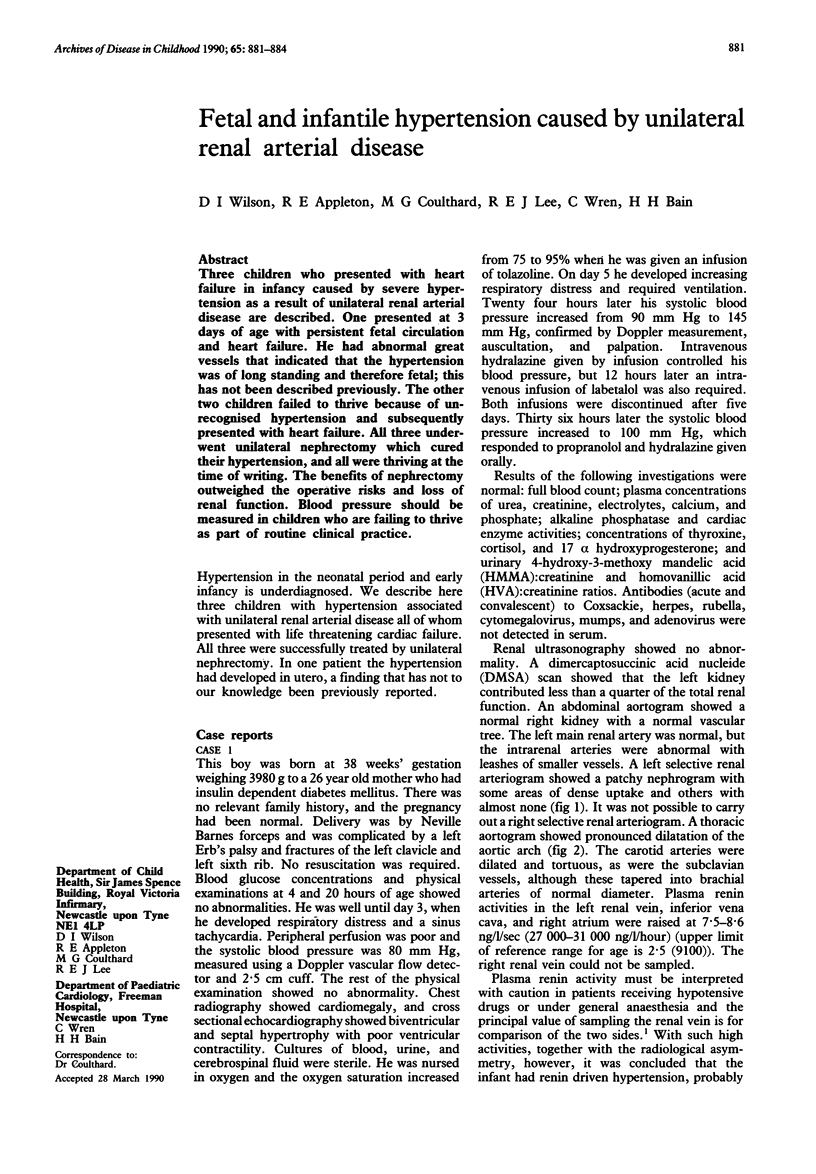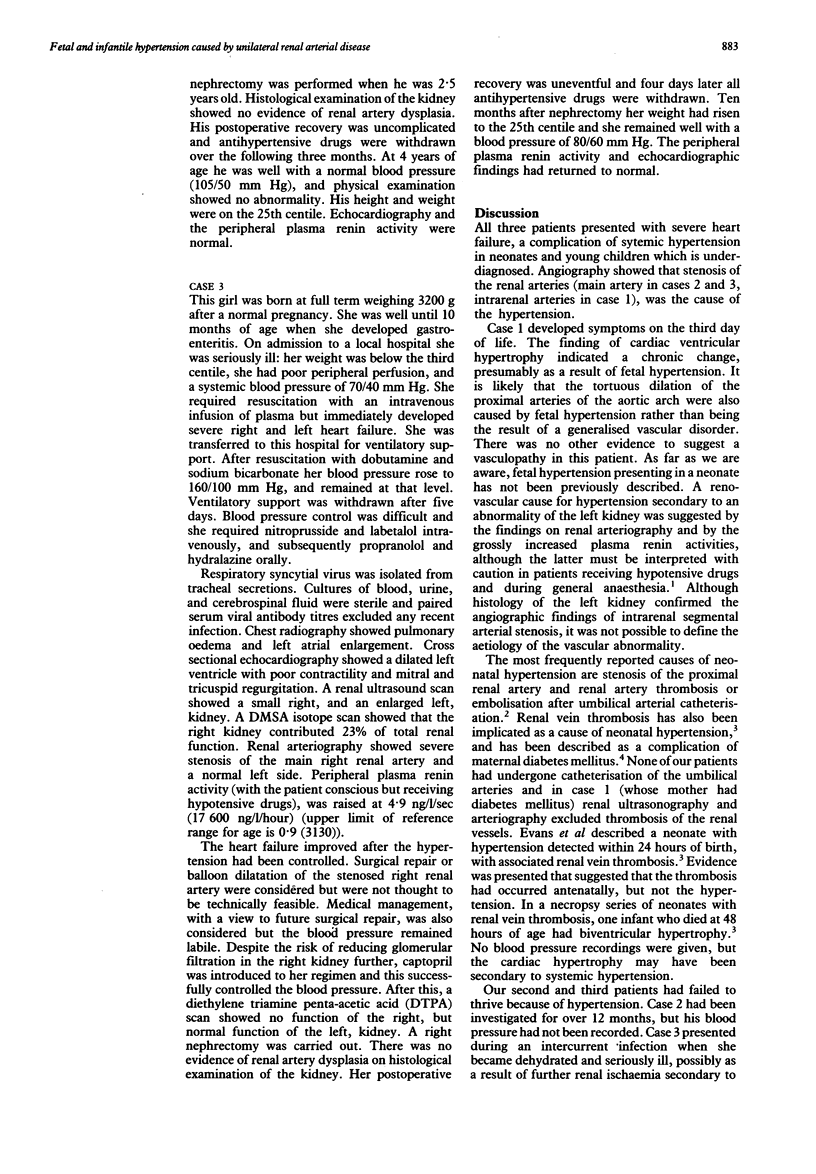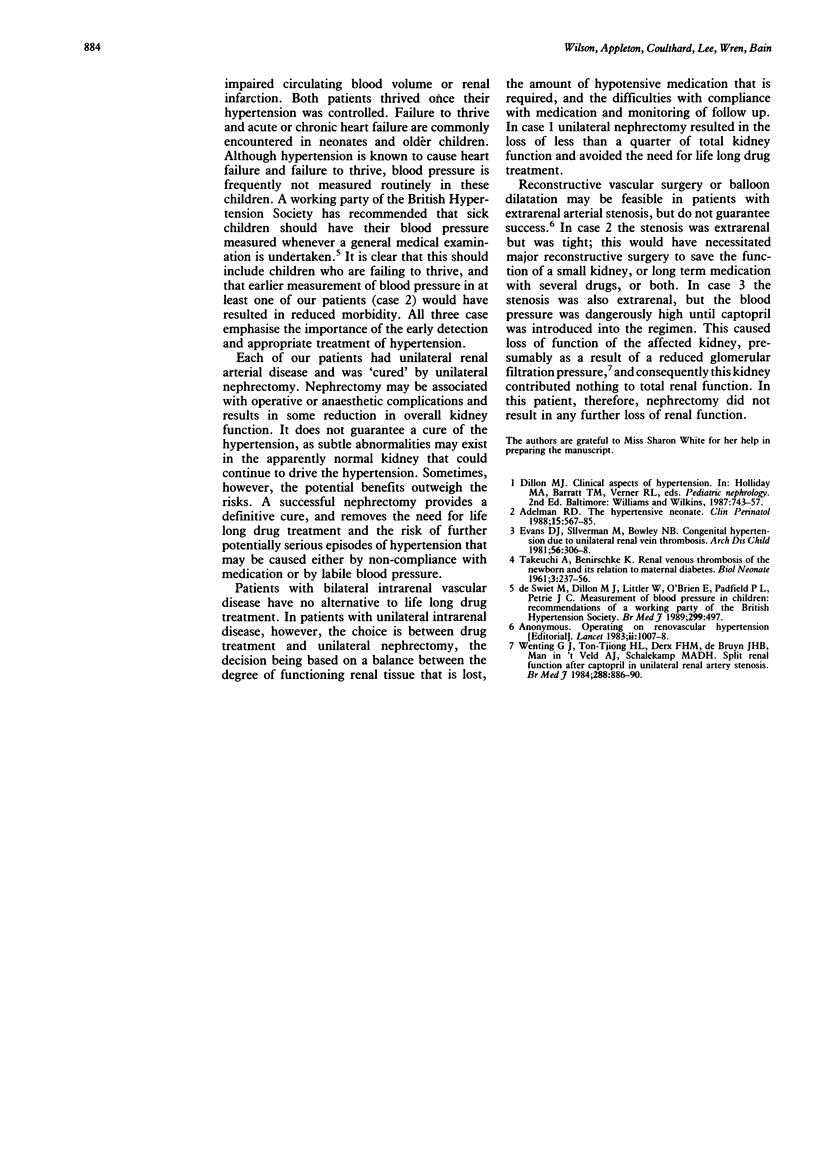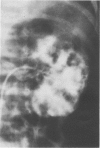Abstract
Three children who presented with heart failure in infancy caused by severe hypertension as a result of unilateral renal arterial disease are described. One presented at 3 days of age with persistent fetal circulation and heart failure. He had abnormal great vessels that indicated that the hypertension was of long standing and therefore fetal; this has not been described previously. The other two children failed to thrive because of unrecognised hypertension and subsequently presented with heart failure. All three underwent unilateral nephrectomy which cured their hypertension, and all were thriving at the time of writing. The benefits of nephrectomy outweighed the operative risks and loss of renal function. Blood pressure should be measured in children who are failing to thrive as part of routine clinical practice.
Full text
PDF



Images in this article
Selected References
These references are in PubMed. This may not be the complete list of references from this article.
- Adelman R. D. The hypertensive neonate. Clin Perinatol. 1988 Sep;15(3):567–585. [PubMed] [Google Scholar]
- Evans D. J., Silverman M., Bowley N. B. Congenital hypertension due to unilateral renal vein thrombosis. Arch Dis Child. 1981 Apr;56(4):306–308. doi: 10.1136/adc.56.4.306. [DOI] [PMC free article] [PubMed] [Google Scholar]
- Wenting G. J., Tan-Tjiong H. L., Derkx F. H., de Bruyn J. H., Man in't Veld A. J., Schalekamp M. A. Splint renal function after captopril in unilateral renal artery stenosis. Br Med J (Clin Res Ed) 1984 Mar 24;288(6421):886–890. doi: 10.1136/bmj.288.6421.886. [DOI] [PMC free article] [PubMed] [Google Scholar]




